Risky research: making diseases more deadly
As some continue to speculate that COVID came from a lab, we’re looking at the scientific research being done on dangerous diseases, whether this work is safe and how it’s regulated. Plus in the news: are Covid vaccines messing with menstruation; how subsea cables are affecting crabs; and scientists add plant cells to brains to supply them with oxygen.
In this episode
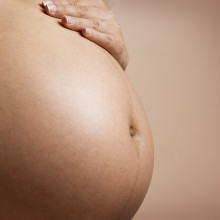
00:60 - COVID vaccines in pregnancy
COVID vaccines in pregnancy
Catherine Aiken, University of Cambridge
Unvaccinated pregnant women catching COVID and becoming severely unwell is a significant cause for alarm in hospitals across the UK at the moment. The guidance is that, just as for flu, pregnant women should be vaccinated against COVID as a priority, but many have not taken up the offer and are now accounting for up to a fifth of the most severely ill cases being managed in some intensive care units. Cambridge University obstetrician Catherine Aiken is deeply concerned, and spoke with Chris Smith…
Catherine - We're seeing up to 200 pregnant women a week who are sick enough from COVID to need to be admitted to hospital. And we know that if a pregnant woman is admitted to hospital with COVID, then she's got a one in 10 chance of being sick enough to actually need an ITU bed and a one in five chance of being sick enough to need breathing support. We also know that it's very bad for babies. COVID doubles the risk of stillbirth in mums who need to be hospitalised, and one in five of the women who's admitted to hospital with COVID has a premature baby, which obviously can have lifelong effects for that child.
Chris - And, of course, these are, by and large, young, healthy people on the whole, aren't they? Who would normally have an extremely low risk of running into trouble with coronavirus infection.
Catherine - Absolutely. We are seeing a really striking increase in sickness among young women with no other real health problems, whose main risk is being pregnant, particularly after 28 weeks in the third trimester of pregnancy.
Chris - Do we know why pregnancy intensifies the risk for COVID, but also a raft of other infections? I'm thinking chicken pox is much worse if you catch that when you're pregnant, isn't it? And a number of other infections that seem to intensify. The flu as well, for example.
Catherine - That's really to do with how the body changes in pregnancy overall. And it's certainly, as you say, not unique to COVID. It's to do with the immune system changes, the hormonal changes, and the changes in breathing and heart function that need to occur in order to support a baby and have a healthy pregnancy. They work extremely well when things are going well, but they can actually be counterproductive if a mum gets really ill during a pregnancy.
Chris - And the women that are ending up in a parlous state with COVID, are they vaccinated or are they unvaccinated?
Catherine - So that's really, really striking. What we know between the start of this year and up to the end of September is that 99% of pregnant women who were admitted to hospital with COVID hadn't been fully vaccinated. The rates of hospitalisation among vaccinated, pregnant women are exceptionally low, and the latest report from the UK surveillance system shows that no vaccinated woman has needed to go to ITU for some time.
Chris - And do we know what fraction of pregnant women are vaccinated?
Catherine - That's a really interesting question because data aren't collected that way nationally. However, that's one of the things that is now being worked on at a national scale, to make sure that we will have those numbers in the future.
Chris - It seems something of an oversight that we didn't actually collect that data. Do you think we're, to a certain extent, reaping what we sowed here? Because when all this began, women who were pregnant were told, don't have the vaccine, you have to isolate instead, you have to shield, because we haven't got data on the safety of the vaccine. Now they're being told, go and get the vaccine. So, are they sceptical with good reason?
Catherine - I think it's a really, really difficult thing to work against poor public health messaging that has previously been out there. As you say, the initial JCVI recommendations excluded pregnant and breastfeeding women from having the vaccine. Now that was on the basis that they hadn't been in the trials. And I can understand why they weren't in the trials, because these trials had to be begun very quickly, and adding pregnant or breastfeeding women creates a whole other delay to beginning a trial, because safety in that sense has to be assessed as well. And so they weren't included in the trial, and so they were excluded from the initial recommendations about who should have the vaccine. The trouble was that they weren't excluded on the basis of any plausibility or reason to think that it wouldn't be okay. They were simply excluded because it hadn't been tested that way. The position now is very, very different because we have data from well over a quarter of a million women in various countries who have had the vaccine without any adverse effect on them or their baby at all. However, you're right that that initial messaging has been very, very difficult to roll back. And, unfortunately, many people interpret it to mean that it wasn't safe, and that worry is very hard to shake off.
Chris - So what's happening is people are essentially trading a theoretical risk that something might happen with this vaccine, against a very real risk that if they catch coronavirus, they are at extreme risk of getting extremely unwell?
Catherine - That's right. The data are actually very much in favour of this being a very safe thing to do, whereas coronavirus is a very dangerous thing to risk during pregnancy. And I think it's important to say that there's no rational reason that we have to think that a COVID vaccination could harm babies. It's not a live vaccine, it doesn't contain any virus at all, and we routinely give other non-live vaccines, such as flu and whooping cough in pregnancy. The vaccines don't contain ingredients that are harmful to mums or babies. And we do have evidence from at least a quarter of a million pregnant women that they don't cause in-fetal anomalies or problems.
Chris - Given the government have made this announcement this week, there's obviously a very significant concern, especially as we go into winter and we're going to probably see more instances of this. So, is it a case now that we just encourage, or should encourage, as many women who are not vaccinated and are pregnant, or are about to get pregnant, to go and get vaccinated?
Catherine - Absolutely. We are seeing heart-breaking stories every day of otherwise well women who are extremely ill and they and their babies are at very high risk.
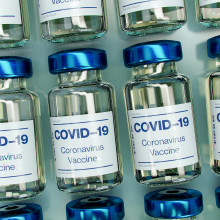
07:12 - COVID jabs might be changing periods
COVID jabs might be changing periods
Viki Male, Imperial College London
Along with the more common side effects of getting a COVID jab, like a sore arm or fatigue, some women have reported a change to their periods, ranging from starting early or late, bleeding more heavily, or skipping it all together. Now, some scientists are now calling for a closer look at what might be going on, including Viki Male who’s from Imperial College London and spoke to Eva Higginbotham about how, and why, this might be happening...
Viki - A lot of people, and back in September it was just a little bit over 30,000 people, have reported that they've noticed a change to their period happening shortly after the vaccine, but the changes that people are reporting have been mixed. The most common one is your period being later than usual, and the next most common one is it being heavier than usual, but some other people have noticed other things like skipping your period altogether, or perhaps their period being lighter than usual. The way that this data is collected, we can't actually know for sure if these are changes that are being caused by the vaccine, or if they are natural changes or variations to the menstrual cycle that just happened after people have got the vaccine and so they've made a connection and made a report. I think what is very important to say is that most people who are reporting this find that their period goes back to normal within a month or two. So this is not a long-term change. And, also, we know from other evidence that the vaccines don't have any impact on female fertility.
Eva - Are people reporting this relating to all the different kinds of vaccines that are available in the UK? So Pfizer and AstraZeneca, for example, or is it just one vaccine type?
Viki - Yeah, so it's actually all the vaccines that are available in the UK. And, in my research, I sometimes talk to people who are being vaccinated in other countries as well, and people are also saying this in connection with other vaccines. So what that tells us is that if there is a link between being vaccinated and having a change to your period, which to be clear, we don't know yet, it tells us that it's not, for example, any particular ingredient of one kind of vaccine. That suggests to me that if there is a link it's probably to do with the immune system being activated. And, in support of this idea, we do have some evidence that some other vaccines like the HPV vaccine can be linked with changes in periods. And we do also have evidence that other things that activate your immune system, like COVID itself, for example, in about a quarter of people who have periods, who get COVID, they'll find that there's a change to their period. So all of this does link into the idea that there could be something going on that could be mediated by the immune system.
Eva - Do you have any thoughts on what that mechanism could be? How could the immune system affect your menstrual cycle?
Viki - Well, I think that there are two biologically plausible ways that this could happen. The first is that we know that the immune system can affect reproductive hormones and indeed reproductive hormones can affect the immune system. Being vaccinated could perhaps slightly alter the levels of sex hormones, and sex hormones are what's driving your periods. So if they're changed, you might find your periods coming perhaps a little bit later. The other possibility is that we know that the lining of the uterus is really rich in immune cells, and this is actually what I work on in my day job, and these immune cells have a role in the build-up and the breakdown of the lining of your uterus. And so we could imagine that if we activate these cells, which the vaccine might do, because it gives your immune system a broad, activatory stimulus, this could perhaps slightly change the way that they're acting to build up and break down the lining of the uterus. And that would in turn have a knock-on effect on when, or perhaps how heavily, you bleed.
Eva - And what sort of studies do you think need to be done to figure this all out?
Viki - Well, ideally we would have asked people - solicited this information - in the clinical trials, because if in the clinical trials we'd said to everyone who has periods, "did you notice a change to your periods?", we would have the comparison between the people who got the vaccine and the people who got the placebo, or the other vaccines, depending on the kind of trial. And that would have told us for sure if there was a link here. What we're now trying to do a little bit is play catch up. So one approach to this that I'm really excited about is tapping in to the data that we can get from menstrual cycle tracking apps, where people have tracked their cycles over many years. We know what's normal for them, and then asking them to log when they get the vaccine, and then we can see a change. And, if there is a change, how common is it? Once we've got that data, I think we'll be able to say with quite lot of certainty, whether this is really linked or whether it's just something that people happen to be noticing and making the connection.
Eva - Is it common in clinical trials to ask people if whatever the treatment, or vaccine, or whatever it's for, has had an effect on the menstrual cycle?
Viki - As far as I know, it's never been done in vaccine trials, and that's partly, I suspect, because so many vaccine trials are done on children, because with most vaccines we're developing them to protect children or to protect people as soon as we can, which usually means giving the vaccine to them as children. So I think this is one of the reasons that we haven't usually thought about this before in vaccine trials. But what I hope we'll take forward from this is that, actually, this is probably the sort of thing that we should solicit, because it's the kind of thing that people are interested in, and do worry about.

13:12 - Crabs mesmerised by electric cables
Crabs mesmerised by electric cables
Alastair Lyndon, Heriot Watt University
As we race to replace natural gas, people are increasingly looking to parts of our coastline as places where the wind blows relatively reliably, meaning that it’s a good venue for wind turbines. But, oddly enough, the biggest fans of these big fans turn out to be...crabs! Scientists have noticed that the cables running along the seabed to transport the electricity from offshore to the mainland can affect the behaviour of local crabs, as Harry Lewis heard from Heriot Watt University’s Alastair Lyndon...
Alastair - They're mesmerized, as far as we can tell at the moment, by electromagnetic fields, which we've simulated in the lab using magnets and using a kind of a coil, which produces a magnetic field in the water.
Harry - I mean, this seems like a strange investigation off the top of my head because there aren't that many cables in the sea, are there Alastair?
Alastair - There are a few at the moment, but there's likely to be a lot more soon because of the growth, particularly around the UK of offshore power generation. So that is sort of renewable energy either from offshore wind farms or tidal turbines and these sort of things, and they need cables. And so we anticipate there's going to be larger numbers of cables being deployed into the future.
Harry - Ok, and how do you go about looking into this?
Alastair - We did two types of experiments. One was just with electromagnets under the tanks, which could be switched on or off. And then we also have, as I say, these large coils of wire, which we can produce around bigger tanks of maybe hundreds of liters, which we can put larger crabs into.
Harry - So am I right in thinking that you have your tanks of crab, you got to cable running through them and then above it, you're taking pictures, aerial photographs, or film of the crabs and seeing how they react to you turning on this magnetic field.
Alastair - Yeah, that's correct. We would normally run the magnetic field over a 24 hour period, and we would then look to see what the crabs activity was over that period, compared to a control where the magnets are switched off. When the magnets is switched on the crabs, move about much less than we would normally expect them to do. They generally move around more at night than in the daytime anyway, but when the magnets are on, they move around a lot less at night than they normally would do.
Harry - So we know that they have a behavioral response to electricity running along cable. Do we know why they're attracted to that magnetic field?
Alastair - We don't really know, but there's quite a bit of evidence from a variety of different animal groups that many creatures can detect the Earth's magnetic field and use it for navigational purposes, brown crabs move over quite long distances. Certainly the male crabs, we know, move over tens to hundreds of kilometers in relatively short periods of time. So it seems a reasonable surmise that they perhaps use the Earth's magnetic field in these sort of movements. And that the magnetic fields around cables are actually detected by that mechanism and perhaps more attractive than the, the background magnetic field.
Harry - That's interesting because if they're traveling so far, these brown crab, there's actually quite a, I would assume, a high likelihood that they're going to come into contact with cables of offshore wind farms.
Alastair - That's the concern really. I mean, interestingly until very recently, we weren't really aware that crabs moved around much. And I think the assumption was that they were perhaps quite territorial in this stage, quite close to home. One would anticipate it's something to do with reproduction and finding females, I guess, in a biological sense, it probably helps to avoid inbreeding. And we find that, of course, again, a lot of animals, you get dispersal of one or other sex as they mature. And so it seems likely that that's what's going on here, that the males are dispersing and looking for females with which to mate, helping to mix the gene pool, if you like.
Harry - Why is it important? What effects is it going to have out in the world, out in the ocean?
Alastair - There are various possibilities. And as I said, we don't really know because we haven't looked, but we imagine that there could be issues of accumulations of crabs in the same area. It might result in unintended consequences of, for example, attracting fishing activity into the vicinity of cables, which might not be good for the cables themselves, it might also result in higher catch rates of the crabs. So that could potentially be negative in the longer term as well. And the movement of males, if it is important in terms of the reproductive biology of the crops may disrupt reproduction in some populations where the supply of male crabs is being reduced for whatever reason.
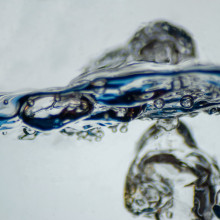
18:00 - Photosynthesising algae inside living brains
Photosynthesising algae inside living brains
Hans Straka, LMU Munich
Biomedical researchers often want to keep animal organs alive outside of the body to study them, just like how you’d keep an organ transplant alive before it goes into a patient. But those organs need oxygen to survive. Right now, the solution is to keep the organ in a bath with bubbles of oxygen. But a team at LMU Munich have another solution that sounds like it’s come straight out of science fiction. To keep their tadpole brains alive long enough to study how the nervous system works, they’ve injected algae cells into the blood vessels in the brain. When illuminated, the algae produce oxygen, which is fed directly to the surrounding brain cells, as Sally Le Page heard from Hans Straka...
Hans - The brain of all animals need an awful large amount of oxygen. Now, what we were interested is how can we actually understand how much energy a brain needs to perform its function? And our idea was why not directly use the oxygen, which is produced by plants and recruit it to provide the energy for the functional brain. Of course, we cannot plant the tree into the brain. So we had to go to a smaller version, which are algae. Algae are green plants at a single cell level. So these algae produce oxygen, just like a tree produces oxygen. Now, by inserting these algae into the brain, we thought we would have the capacity to directly produce the oxygen inside the brain, which can then be recruited by all the nerve cells in the brain.
Sally - So the air that I breathe, obviously I need oxygen to survive, the oxygen comes from trees and algae anyway, and you're like, why don't we short circuit that, why don't we cut out the middleman and just stick the photosynthesis right next to where the oxygen is being used?
Hans - Exactly. That was the basic idea because it's faster. In our study, we injected algae into the blood vessels of a tadpole. We are working on these animals after euthanizing them and isolating the brain from these animals. And afterwards measured the production of oxygen upon illumination of the tissue.
Sally - You've got these tadpole brain tissues. You've got them floating around in this little bubble bath of nutrients, oxygen, and now you've inserted algae into their brains. What happened?
Hans - As soon as you turn on the light and shine the light on the tissue, the algae you start to produce your oxygen to such an amount that you all of a sudden can measure a considerable amount of oxygen, even inside the brain. Now, when you turn off the light, it goes down to zero again, because first the algae don't produce oxygen anymore, and the brain is starting to consume all the oxygen that the algae have produced actually.
Sally - And does that mean that if you wanted to, you could turn the light up and down on a demo switch and really fine tune control how much oxygen the brain is getting?
Hans - Exactly. That is what we, what we so to speak have done because we have repeatedly turned the light on and off and saw that the nerve cells start firing. And then they stopped firing when we shut down the light and then restart the firing, when we turn on the light. So we could really drive the brain activity by shining a particular amount of light.
Sally - And now we know it's theoretically possible. In the distant future, looking through your crystal ball, can you imagine human treatments where we might start injecting algae into humans to increase oxygen in parts of their bodies?
Hans - In theory, I could imagine something like that, but I mean, I could imagine a lot of things on the long run, as you have been used together with fibroblasts to heal skin wounds, because the oxygen which the algae produce actually helps closing the wounds. So on the external surface, this is already employed. Well, why not employing it internally as well.
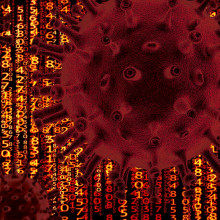
23:03 - Gain of function research: a moral dilemma
Gain of function research: a moral dilemma
We’re talking about the broader implications of a topic that’s never been far from the headlines way back since the Covid pandemic began. Ros Atkins, from the BBC’s Outside Source programme reported on the announcement earlier this year that US officials were formally investigating the possibility that Covid-19 is an escaped laboratory experiment, saying...
Ros - Well the issue of where the pandemic began and how it began has never really gone away, but it's back centre-stage because US intelligence officials are now redoubling efforts to investigate the origins of COVID-19. The orders come from President Biden. Here's the statement. It says, "The intelligence community is split on whether the virus came from human contact with an infected animal or emerged in a laboratory accident". You've probably heard that laboratory theory before: it's that the virus emerged from the Institute of Virology in Wuhan. This is one of China's top virus research labs, and we already know that the city became the first epicentre of the virus, but the questions are where did it originally come from? Some believe the lab is where it started...
This week the World Health Organisation also convened a new investigative team to examine the question. So you may well ask, “why would scientists want to engineer potentially lethal viruses, and why is this even allowed?” But this practice is actually highly legitimate and what’s often referred to as ‘gain of function’ research. It’s where scientists try to alter the behaviour of microbes, including viruses such as influenza, or coronaviruses, so that they can learn more about how diseases and pandemics evolve, and new ways to treat them. We’re exploring what goes on during gain of function research, whether it’s safe and how it’s regulated and controlled. To begin, Sally Le Page presents a moral dilemma, based on the real-life experiments that sparked the whole debate. If you were in charge of scientific funding, what would you do?
Sally - It’s 2007. A new strain of bird flu has been going around for about 10 years. It’s really transmissible and deadly in birds and every so often, someone working in close contact with domesticated chickens gets infected, and sadly 300 people have died. It’s a pretty nasty disease. But to become a human pandemic, the disease needs to be able to spread from human to human, and so far there isn’t any evidence that that has happened. Some leading flu experts are saying that it will never adapt to humans and there’s no chance of it becoming a human disease. Other experts aren’t so sure.
With this information, how worried would you be about this disease becoming a pandemic? Would you spend millions of pounds monitoring it? Would you ignore it?
Then a team of respected scientists offers to research how likely it is that this bird flu virus could mutate to become capable of spreading between humans. If the researchers are unable to make this virus spread between mammals in the lab, in this case ferrets, the chances of it causing a human pandemic are slim to none. If they can make this disease adapt to mammals, well then, you know exactly which mutations might lead to a human pandemic. You can spend money on monitoring and start developing new vaccines, potentially preventing a massive deadly pandemic. But in the process, the scientists will have created a new, more infectious version of an already dangerous and deadly virus. The researchers will take huge safety measures, but if the virus were somehow to escape the lab, it could cause the very pandemic you’re trying to prevent.
What would you have done? Would you fund the research?
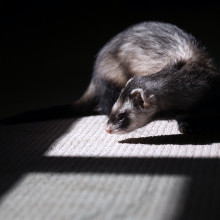
27:23 - Why are gain of function experiments useful?
Why are gain of function experiments useful?
Ed Hutchinson, University of Glasgow
Chris Smith spoke with flu expert and virologist at the University of Glasgow, Ed Hutchinson about researchers creating a form of avian flu that could possibly spread between humans...
Ed - So there was this huge question hanging over the influenza field. We knew that influenza was very good at jumping from birds into humans, because that was where previous pandemics had come from. We knew there was this really nasty strain of highly pathogenic H5N1, avian influenza as it was called, that was quite often making people very sick, but we didn't know whether that had pandemic potential. And it wasn't at all obvious how you could, using sort of standard methods, address that question. And then at this conference Ron Fouchier, who is one of the world's most highly respected flu researchers, stood up and basically said, well, we've answered the question. We took a strain of H5N1 influenza virus, we gave it a little bit of a head start knowing what adaptations it would normally take getting used to growing in mammals, and in a very secure facility, we looked to see if it could become transmissible in ferrets and it could. And instantly that answered the question. From that point on, we knew that H5N1, at least in principle, could become a pandemic virus, and it was therefore entirely legitimate to monitor H5N1 strains and to put a lot of effort into making sure that never happened.
Chris - Well we've actually got a clip of Ron Fouchier at that conference where he announced he'd been doing the work. So let's have a listen to how he described his findings...
Ron - We borrowed evidence from a previous pandemic, when avian viruses changed and caused infections in humans. And some of the changes that occured in those pandemic viruses we have introduced by genetic manipulation into an H5N1 virus. And that H5N1 virus now replicates in the upper respiratory tract of mammals. Now that virus has many of the hallmarks of a pandemic virus but we found initially that it was still not transmitted. It was very surprising. And so what we did then was to put it into a mammal and let the virus adapt to the mammal for a few rounds and then take that virus and then that virus will become transmissible. And so by intelligent experiments we were able to introduce three mutations into the virus that were necessary, and then because we didn't know the rest of it, we let the mammals do the rest of the story and they accumulated two or three additional mutations. And those five or six mutations are enough to make this virus transmissible.
Chris - Ron Fouchier speaking to me back in 2011. So Ed, interestingly in that instance, they did it by effectively encouraging the virus to change in its natural way. They weren't actually tinkering with it genetically. Other scientists have done things slightly differently by taking samples that actually came out of the permafrost, for example, of people who were victims of the 1918 Spanish flu and they've recreated the 1918 Spanish flu. Was that with the same aim in mind? To try to understand what it takes for a virus, not just to be flu, but to be a really nasty flu?
Ed - So that was a separate study, one which took place slightly sooner, but actually raised a lot of the same concerns because you've created something which didn't exist before which is potentially dangerous. That experiment there was not answering the question, "could this virus become a pandemic?" Because we knew it did. The 1918 influenza, the great influenza as it is sometimes called, is still by most measures, even today, the worst pandemic we have a record of, but at the time we didn't know why that was so dangerous. So once again, working in a very, very controlled way, the researchers were able to bring back from the dead this virus and work out what had made it so dangerous so that we could protect ourselves against similar viruses in the future. You kind of hope that the first thing to be brought back from extinction would be something a bit more cuddly or exciting, but actually it did turn out to be this virus.
Chris - One of the most deadly diseases we've ever encountered! Did it deliver in the respect that the aim was laudable, as you've said, to try to understand whether these things can become pandemics and what it takes for them to do that, or how do they cause severe disease, are we better endowed with knowledge about flu biology and its threat that it poses to us because of these experiments?
Ed - Sure. So I think, the two studies are separate, but if we look at the H5N1 study, so this question of "could H5N1 influenza viruses adapt to humans?" There were two types of answers you could get from that study - there's a specific answer and a general answer. The specific answers are what kind of changes would the virus need to gain in order to start becoming an efficient mammal virus rather than an efficient bird virus, and we got some answers out of that, and some answers which we'd never known about before. But influenza is a complicated machine and you can fine tune it in many different ways. So although we learned some of the ways in which influenza could adapt to humans, we didn't spot all of them. And indeed the next part of it which came along, which was in 2009, blindsided us because it tweaked a whole set of different features of virus which hadn't cropped up in this study. So it showed us some specific features, some things to watch out for, but it didn't highlight all of the possible ways in which this very changeable virus could adapt to humans. But in general terms, it answered the question definitively "can highly pathogenic H5N1 influenza viruses adapt to become transmissible in mammals?" And the answer was very, very clearly yes, because they showed that it happened and that's an unambiguous answer.
Chris - Are there any ways that scientists could have arrived at the same point with that knowledge in hand without having to do this research, this gain of function research, to create potentially extremely devastatingly dangerous pathogens?
Ed - It's very hard to see how that general question could have been answered in any other way. However, this study published a huge amount of focus on how these studies can be carried out and what people have put a lot of effort into since is to work out ways to do these things even more safely. So we already had very good secure labs, but, for example, there are now ways to break the virus at the same time as you fix it in other ways to ensure that, even if you generate something which is better in some respects, it's not going to be capable of thriving in the outside world.
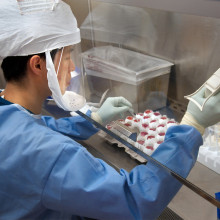
33:58 - Risky research: making labs safe
Risky research: making labs safe
Amanda Phelps, Defence Science and Technology Laboratory
To understand more about the risks of this type of research, it’s important to understand all of the safety procedures that are in place not only to prevent any disease from escaping a lab and infecting the wider population, but also to protect the health of the people doing the research in the labs. Clearly some research is more risky than others, and to find out how these risks are managed, Sally Le Page spoke with virologist Amanda Phelps from the UK’s Defence Science and Technology Laboratory - DSTL - at Porton Down ...
Amanda - So there are four categories of labs ranging from one all the way up to containment level four. Containment level one would be the sort of lab you might have in your school or college, handling agents that pose no threat or harm to people, all the way up to containment level four, where we handle the most deadly of pathogens on our planet
Sally - Levels three and four, I suppose, are the more serious ones. Certainly I've never been in a level three or a level four lab. What sort of bugs are in level three versus level four?
Amanda - At containment level four they are all viruses. These are agents that are likely to cause you severe harm or probably kill you. That's why they're classified at the highest level. Two good examples would be ebola virus and Marburg virus. Viruses that we handle at containment level four don't have any treatments generally, whereas for three, the likelihood of death from contracting something like plague or anthrax isn't as high, and we have a number of treatments available.
Sally - If there's a chance it can kill you, it's in three or four. And if you can treat it, it's probably in three. If you can't treat it, it's probably in four.
Amanda - That's a really good summary. Yes.
Sally - What's it like to, say, work in a category three lab when you're working with viruses like avian flu and the current coronavirus?
Amanda - Okay. So it's nothing like you would probably see in any of the movies is a good place to start! Only the people who are qualified and experienced at working with these particular agents are allowed to go into these particular labs. We can control the air flows, and for us that means negative pressure, so the air is always rushing in and it doesn't rush out. We wear our normal clothes, go on in, put your lab coat on, put a pair of gloves on, and then you can begin work.
Sally - And so how do you make sure that you don't accidentally infect yourself?
Amanda - The glove boxes that we work in - essentially a large box with two large gloves attached to it at the front, and we sit at those. We have air flows, again at negative pressure, so air is always rushing in, and we only ever handle the bugs in these glove boxes. So the bugs and us, we're never actually in the same place at the same time. There's always, always a physical barrier. And most of the time, it's not just one barrier, it's two or three.
Sally - So you're one of the rare breed of researchers that actually works in a category four lab. So what's that like to work in? How is it different from category three?
Amanda - We need to completely change out of our everyday clothes and change into what we call scrubs. We have to put on a special pair of shoes, or a dedicated pair of shoes, to go into the lab. And once in the lab itself, we have lots of connected glove boxes all linked together so that all of the work that we need to do is entirely contained within the corridor, or link, of gloves boxes. Once we've finished our work for the day we then need to remove the scrubs and the dedicated shoes and have a shower, a full shower with hair wash, and then come out and we can get back into our everyday street clothes.
Sally - And of course, the majority of the time, if any accidents were to occur, it would be just that - an accident. But what's to stop someone who's seen a few too many science fiction movies from stealing one of these nasty viruses or bacteria from one of the labs?
Amanda - We have very strict audit-able records of the materials that we hold. So anytime we access, let's say anthrax as an example, if we were to access some stocks for some work, then we would need to make a record of what we have accessed, when, how much, and what we used it for. So there are very, very strict controls. The people element is always an interesting factor, but again, I come back to the training where we bring people in at the lower levels, we train, we work alongside them, and it's only when we recognise that they have the right skillset and the right sort of up aptitude for working in the high containment levels, only then will they progress.
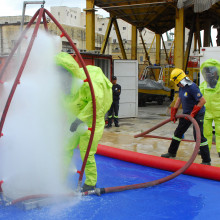
38:53 - Lab leaks: a history of biosafety accidents
Lab leaks: a history of biosafety accidents
Alison Young, University of Missouri
High-security labs use equipment and procedures to protect themselves and the wider public. But of course, anywhere there are humans, there’s the possibility of human error, and laboratories are no exception. Alison Young is an investigative reporter and Professor of Journalism at the University of Missouri. She specialises in mistakes and errors in biosafety. Sally Le Page asked her what can go wrong in these high-security labs...
Alison - There are a variety of things that can go wrong and that have gone wrong. I have spent most of the last more than ten years reporting on accidents that have occurred at some of the world's most elite labs, places like the National Institutes of Health. Obviously viruses and bacteria don't just walk out on their own. The ways that they can potentially get out usually has to do with human error or riding out on human beings.
Alison - And we had a situation at the Centers for Disease Control and Prevention, where a scientist at the CDC in 2014 was preparing a specimen of what was a benign strain of avian influenza to send for research at another government lab. The problem was that they had used some bad safety practices and prepared the specimen at the same time they were also preparing specimens with a very deadly strain of avian influenza. So they send off the specimen to this other lab and the scientists who are working with it, didn't realize that they were working with this deadly strain of influenza until the chickens in their research study all unexpectedly died. In that case, we got lucky. Those researchers just happened to, as a matter of course, be working with a higher level of protection, but they were not required to for the kind of experiment that they were doing.
Sally - Is it possible to do this research in a way that is 100% safe?
Alison - Everything is subject to human error. These labs are designed with redundant safety systems, but at the end of the day, it's human beings that are operating within them. In the United States, there are only a subset of laboratories that come under actual true regulation. Every year, just in that subset of labs, there are a hundred serious incidents every single year where a person working in a lab has been exposed to some sort of select agent pathogen.
Sally - So that doesn't mean that there are a hundred instances where the virus or bacteria has escaped. It's where there is a chance that the researcher has been infected.
Alison - Exactly. I mean, the good news in all of this is the number of those incidents where the person who is working with the pathogen actually becomes infected is relatively low. And even lower still are the number of times where a laboratory accident has resulted in infections out in the wider community, but those kinds of incidents have happened.
Sally - Can you give us an example?
Alison - Sure. I mean, there are three really prominent examples of this. In the UK in Pirbright in 2007, at a large animal research and vaccine manufacturing facility, they had what was literally a lab leak, where they were working with Foot and Mouth Disease virus to make vaccines. And they had leaky drainage pipes that had corroded and not been maintained. And ultimately there were herds of cattle that were on nearby farms that became infected, and there were 600 cattle that needed to be culled in that case.
Sally - Animal and human pathogens and diseases have their different categorisations, but Foot and Mouth is at the top of the animal diseases. It only is worked on in the most secure facilities and this is happening in the UK, and yet somehow it still managed to escape.
Alison - It really is one of the ones that is held out there as being an example of what can happen, even when you know you were working with one of the most dangerous pathogens out there. We also had, you know, obviously the pandemic has everyone thinking about SARS coronaviruses and when the first SARS virus emerged, after that epidemic was contained in the summer of 2003, there was a series of lab accidents where workers who were unaware that they'd become exposed in their laboratories, went out and were out and about in public until they developed symptoms. So they didn't even know a lab accident had occurred until after they became ill.
Alison - And then lastly, we'll also say that, when we think about the larger consequences of a lab accident on the world, there was sort of a global epidemic that is believed to have involved a non-natural occurrence of a virus. And so this is in 1977, the re-emergence of an H1N1 influenza virus. This was a strain that when scientists studied, it looked like it had been frozen in time from 1950, the last time that it had been seen. And it's widely viewed that it was either some form of a laboratory accident or some sort of a vaccine trial that had a mishap. So these kinds of things where the pathogen gets out and affects the wider community are relatively rare, but they have happened. And the concern that is being expressed when it comes to gain of function research by scientists and some members of the public is that they may be rare, but there's the potential for devastating consequences.
Sally - If human error is inevitable and there is always going to be the chance, however small, that there could be an accident, in your view, having reported on this for the last few decades, do you think that all of this research should just be stopped? Is it just too hot to handle? Too risky to do anything with?
Alison - As a journalist, it's not my place to say either way, but that is part of the important debate that is playing out right now. There are those who believe that this research is vitally important to developing various treatments and understanding where the next pandemic may come from. But there are those who believe that the risks are not worth whatever the benefits are. And I think that it's an important debate that all of us need to be paying attention to.
Sally - And who does get to decide on whether the risks of this research outweigh the benefits.
Alison - That is an outstanding question. And that's one of the things that's out there for debate. When it comes to very risky research, there are some mechanisms in place for some layers of approval, but questions have been raised in the United States about whether those structures are adequate to ensure sufficient oversight.

46:20 - Regulating research: who decides?
Regulating research: who decides?
Filippa Lentzos, King's College London
Many people have raised concerns about how high-risk research on viruses is regulated. Filippa Lentzos, an expert on science and international security at King’s College London, spoke to Chris Smith...
Chris - Filippa, what is the framework for sort of regulation of doing this sort of work both in the UK but also internationally?
Filippa - Well in the UK, we've got pretty good legislation around safety aspects of working with dangerous pathogens. So everything's covered under the Health and Safety at Work Act regulated by the Health and Safety Executive. But that is just looking at safety aspects, it's not looking at ethical or social questions around whether or not this kind of research should go ahead. We've got some security aspects regulated, but not all security aspects regulated. So we've got some kind of framework and it's a statutory framework. In the United States, it's not in law. There isn't a legal basis for the framework, it's guidance. And it's based on whether or not you are in receipt of federal funding. So if you're funded, you're obliged to follow those guidelines. But if you're doing your research on the basis of private money you don't need to follow, necessarily, those guidelines. Although most companies will do that because that is seen as the kind of the standard to follow.
Chris - And is there a sort of minimum level that countries should comply with or is it very much hit and miss? Could it be that if your country is a bit more lax ,or let's a bit more go through, you're a bit more relaxed about what you're willing to let people do, are you likely to become a magnet for people coming to do higher-risk type studies that are perfectly legitimate, but they want to do them with the least friction, so they'll come to you?
Filippa - Oh yeah, you know, science tourism or research tourism. I mean, there is that possibility, or just subcontracting some pieces of work. Although again, if that work is funded by someone in the UK or someone in the states, you know, you have to adhere to that funder's set of regulations. But we do know that internationally there aren't any set standards for this. There is of course guidance from the WHO, for instance, on biosafety. But again, that only covers safety aspects. It doesn't cover, for instance, whether or not gain of function research should be going ahead and implementation of these is inconsistent across different countries.
Chris - Who actually does get to be judge and jury on that? Who decides what should or shouldn't be done? We've heard at the beginning of the program from Ed Hutchinson some very important, very useful examples of how this has been done for flu. It was dangerous research, but it was safely concluded and has borne fruit. Who would have actually had oversight and decided, yes, this is legitimate, yes, we're going to fund this? And then, applying that to what may or may not have gone on in Wuhan at the Wuhan Institute of Neurology, where they were working on coronaviruses and potentially adapting them. We know that grants were submitted asking for funding to make changes to these coronaviruses for perfectly legitimate reasons, but who would have actually decided whether or not that can go ahead?
Filippa - Well it would have been the funder in that case. So if a Department of Defence in the United States, if they wanted to go ahead and fund that, that would be okay. There is no international oversight body that says, no, that can't be done, or "we're the kind of World Lab Police, and we're going to go in and check!" So nobody internationally would say no. So it's really up to the funder and the particular local or national regulatory framework whether that can go ahead. And of course, with that work, we know that the Department of Defence in the United States said, no, we're actually not going to fund this because we think it's too risky. We don't know if it was funded by somebody else or whether it still went ahead
Chris - Yes indeed because you've got the idea, you've written the application, you've thought about how to do the project. If someone says no, you just take the project somewhere else
Filippa - Quite possibly. And often when you do write research proposals you need to do some of that research in advance in order to make sure that you can confidently say that this is a viable research project. So it is also possible that some of that research was already done in advance of the proposal being submitted.
Chris - We heard from Alison Young about some examples of things that have gone wrong. When things are discovered to have gone wrong, how do they get investigated? And then how is change and learning brought in to make sure that the same mistakes don't happen twice? Is there anything that's in place to make sure that we do learn from our mistakes?
Filippa - Well, not enough, I would say. And again, this differs from place to place, right? So in the UK, if there are big accidents, you know, the foot and mouth disease outbreak that Alison was referring to at Pirbright, there was a big inquiry and there were hundreds of pages written up so that we would learn from that incident. At smaller incidents that are less well-known, it's harder to learn from them. Also we don't have these kinds of 'accident registries' that we could go into necessarily. A lot of local accidents, most local accidents are small, of course. And so they don't get reported.

52:33 - QotW - why are my eyes different colours?
QotW - why are my eyes different colours?
Eva Higginbotham contacted David Mackey from the University of Western Australia to answer this colourful question...
Ellie - My name’s Ellie and I’m a teacher from Manchester. We’ve been learning about genetics and one of my students asked me a question that I couldn't answer..
Student - I'm a Year 9 student from Manchester and I've got one blue eye and one brown eye. When I have kids, are they going to have a blue eye and a brown eye like me?
Eva - Now I am fully invested in finding out the answer to this question because I also have eyes which are different colours - the iris of my left eye is light green, whereas my right eye is split down the middle - half green and half brown. And when I asked my science teacher about the genetics of this when I was in year 7, she called me a mutant! So I’m glad your teacher Ellie is more supportive of this excellent query... I went ahead and put the question to eye colour expert David Mackey at the University of Western Australia...
David - Iris colour, and similarly hair and skin colour, is mainly influenced by the production of pigment which is predominantly melanin. A brown-coloured iris has lots of melanin, while a blue coloured iris has little melanin. The eye appears blue for the same reason the sky appears blue, from the scattering of light. In the case of an eye, light is scattered by the clear collagen fibres in the front part of the iris.
Eva - Similarly, there’s no ‘green pigment’ for green eyes, instead the eye appears green due to a combination of minimal melanin and light scattering. So that’s why eyes appear different colours, but what determines what colour eyes each of us have?
David - We used to think the genetics of eye colour were quite straightforward, with brown being dominant. We now know that the genetics of eye colour are quite complex with dozens of genes and environmental factors also playing a role. Newborn babies often have lighter-coloured eyes and the pigment increases over the first few years of life. Having eyes of different colours is known as heterochromia and this is usually due to environmental factors. David Bowie and eye injury
Eva - So if heterochromia is often caused by environmental factors, what does that mean for the children of people with heterochromia?
David - It is unlikely that your children will have eyes of different colours. However, if you were a dog, there is a high chance of your offspring having heterochromia. In dogs, and some other animals, just as their fur can have patchy areas of pigment, they can have one pigmented and one less-pigmented iris. This is particularly noted in Arctic Huskies. Some genes associated with this have been identified.
Eva - So there you go, it seems that it’s unlikely that your children, or my children, will also have beautiful differently coloured eyes - we’re the lucky ones! We’ll just have to get them a Husky instead...Thanks David. Next week, we’re answering this question from Rob
Rob - Is dark matter lumpy or like grains of sand?










Comments
Add a comment